Back in October 2021, the excellent team behind Sondehub added several features to the map. They added launch site locations, grabbed from the official NOAA database. Clicking on a particular launch site allowed a user to generate a weeks worth of flight predictions based on the most recent GFS run. Cool!
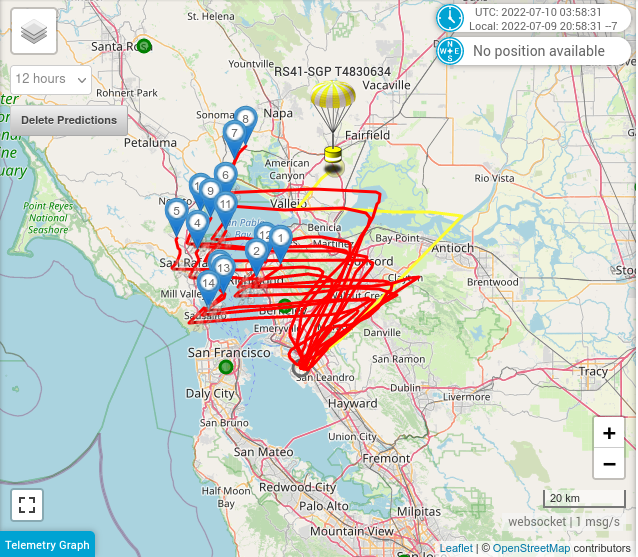
The red lines on this prediction map of Oakland show the next 14 launches (7 days). As with any prediction of the future, the further out you go the worse the prediction.
Reverse predictions (pdf) were also added, for predicting where a radiosonde was launched from. This feature would have been very helpful when I was trying to find the Monterey Bay launch location.
Scrolling around the new map, I saw a launch site just east of Houston, Texas. I knew some people that lived in Houston, so I sent them a radiosonde receiving station. The hardware was almost identical to the Santa Cruz station, except that this station is entirely inside a home. No weatherproof case was needed, which is great because I didn't really want to figure out how to cool a sealed plastic box baking in the sun.
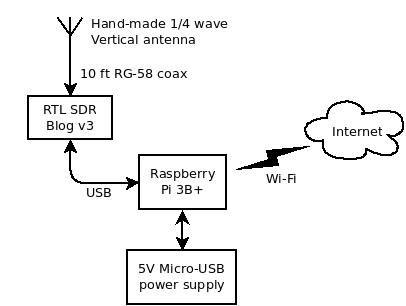
The hand-made quarter wave vertical antenna is hung up in a window. Unfortunately, this antenna is very compromised, as the window is not facing the launch site and there is another building only a few feet away.
The software installed on the Raspberry Pi 3B+ includes radiosonde_auto_rx inside a docker container, and wireguard for remote access and control.
TRACER Project
The temporary Tracking Aerosol Convection Interactions Experiment (TRACER) (pdf) began running in October 2021. The project uses C-band radars, aerosol measurements, and radiosondes to measure the cloud and aerosol interactions during storms over Houston. After delays due to COVID, the project started in October 2021 and is scheduled to run for one year. An Intensive Operational Period (IOP), where more radiosondes are launched, runs in the summer months when storms are most likely to occur.
For those of us interested in the science plan (pdf), what they're trying to do is actually pretty cool. They are merging a bunch of existing and new radars, lightning detectors, ocean buoy sensors, air particulate sensors, and satellite data to predict how bad these storms are going to be.
Here is a great article about the project from the Department of Energy (pdf).
Radiosonde Launches
While I knew where the radiosondes were launching from, I wasn't sure when they were released, or how many per day. I got my station working in the beginning of November 2021, and over a few days in December 2021 I calculated the launch times based on the limited data that I had.
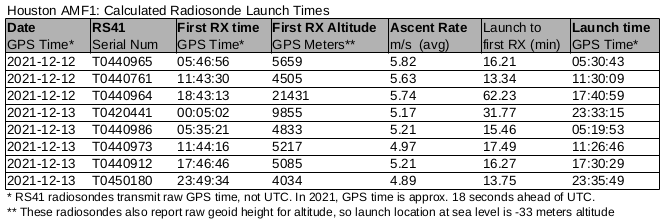
Tabulating up a few days shows a clear pattern of launching at 0530, 1130, 1730, and 2330 UTC. Local time this is 11:30pm, 05:30am, 11:30am, and 5:30pm. The slight variation in the launch times indicates that these radiosondes are hand-launched.
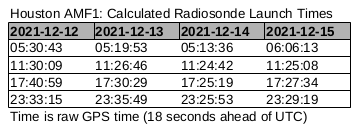
Emailing with the Principle Investigator for the project pretty much confirmed my calculations. And he indicated that during the summer months when the conditions are right, they will be launching radiosondes from Guy, Texas, and also from four mobile launchers in the area. Wow, so many radiosondes in the air!
Station Results
From November 2021 to the end of June 2022, this station received over 800 radiosondes, which is about four per day. The station was knocked offline for about a month due in April 2022 to a RTL-SDR hardware failure.
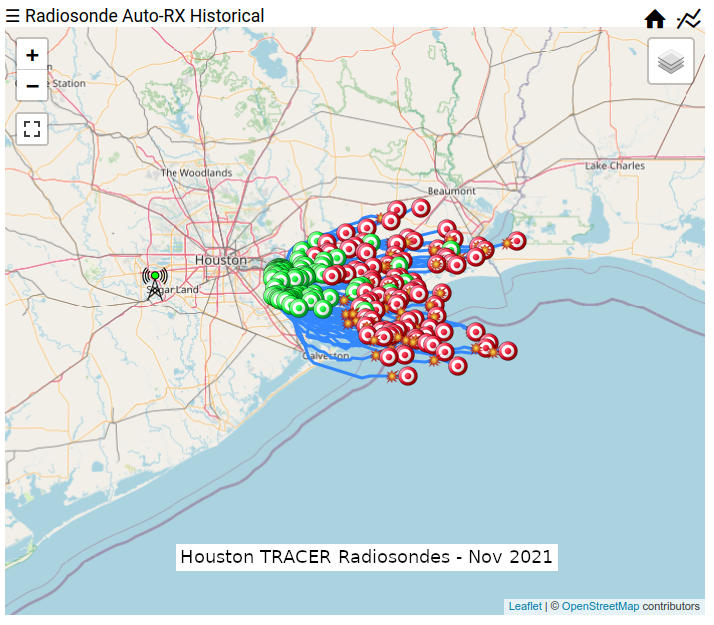
As we can see in the winter, the high-altitude winds blow from the west to the east.
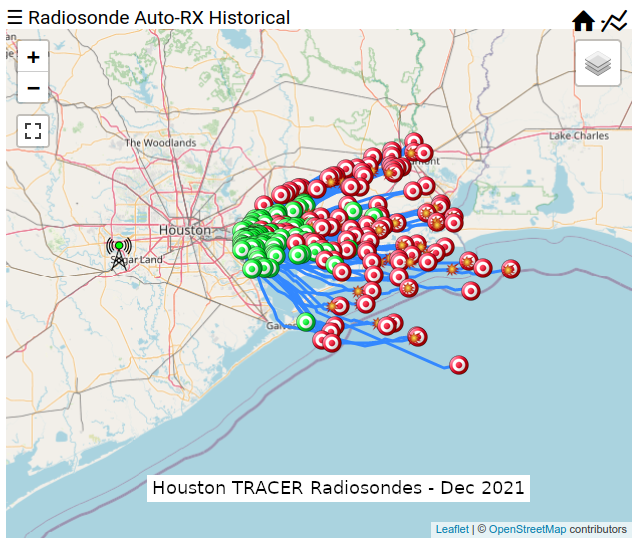
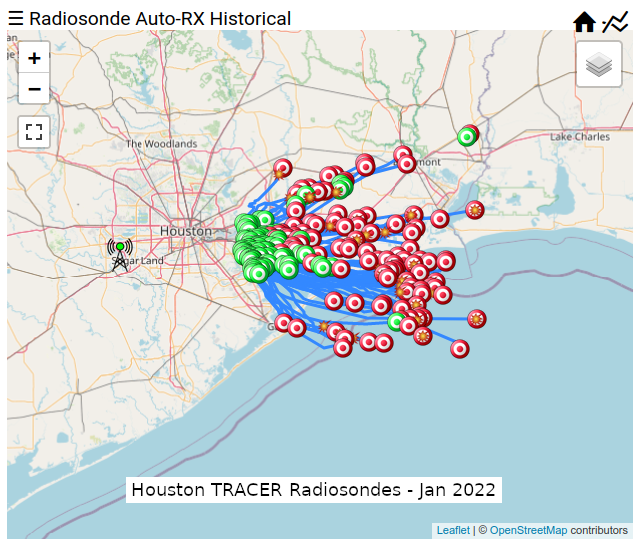
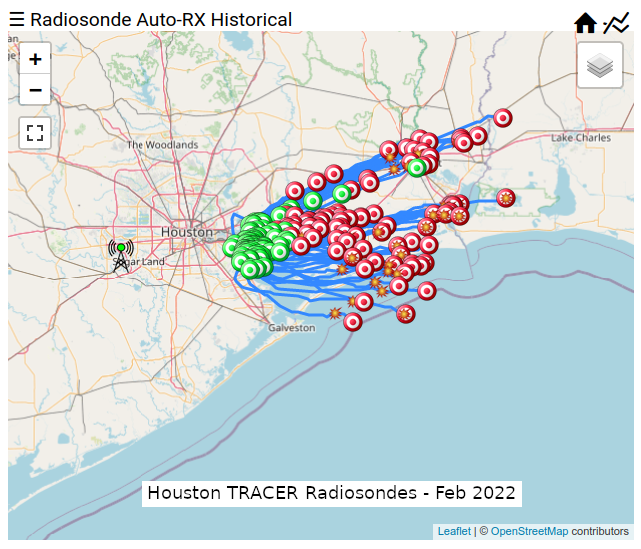
On March 29th, 2022, there was a stray Intermet Systems iMet1/4 radiosonde launched near College Station, Texas. Reverse prediction had it launching from the Texas A&M campus.
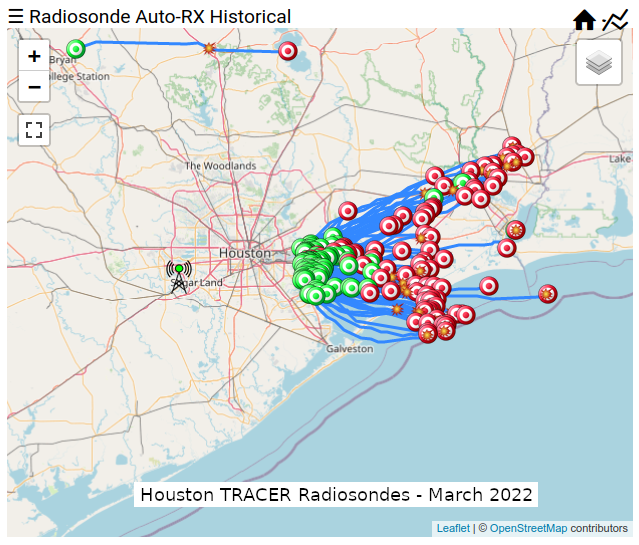
In April 2022, there were a few more radiosondes launched from College Station, Texas. I also had my first RTL-SDR dongle hardware failure on April 18th. It took a month to diagnose the problem, ship a replacement, and get it installed.
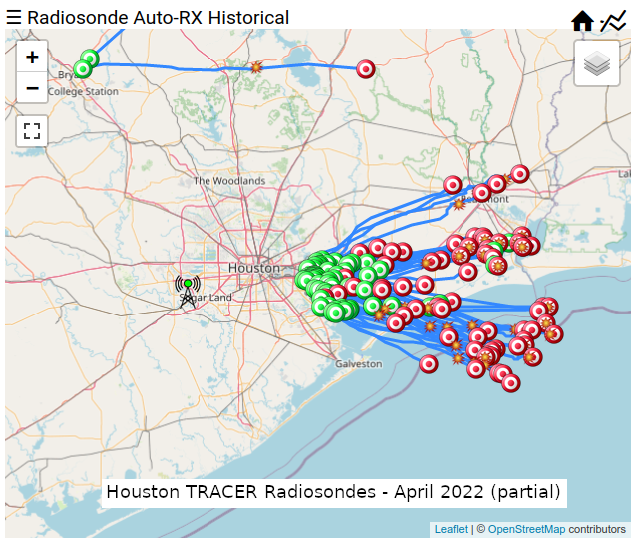
My station came back online on May 11th, and the high-altitude winds were starting to blow towards the south. My compromised antenna has poor coverage towards the south, so I was only receiving one or two radiosondes per day in May.
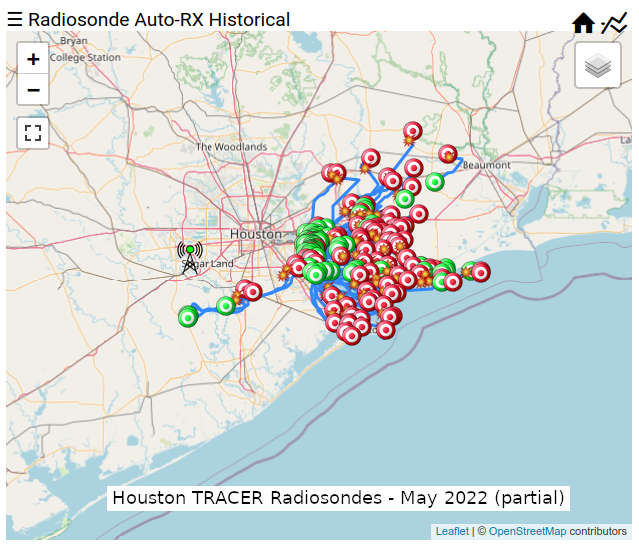
The winds in June started blowing to the west and north.
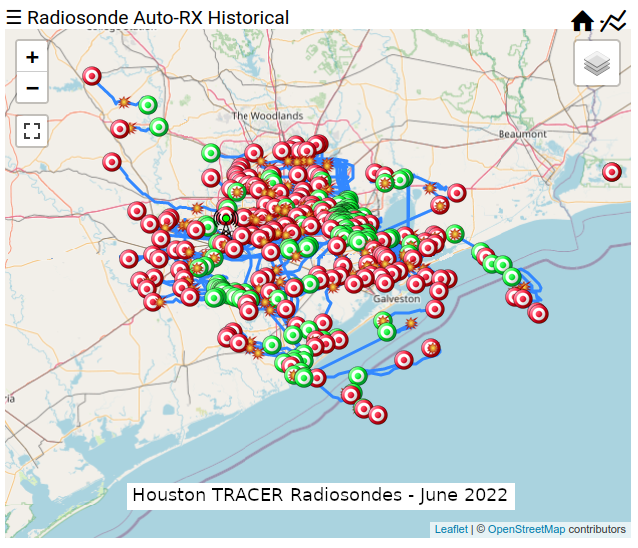
Looking at the total numbers of radiosondes launched per month, it's clear that the TRACER team ramped up launches in June, as the intensive operational period of the project begins.
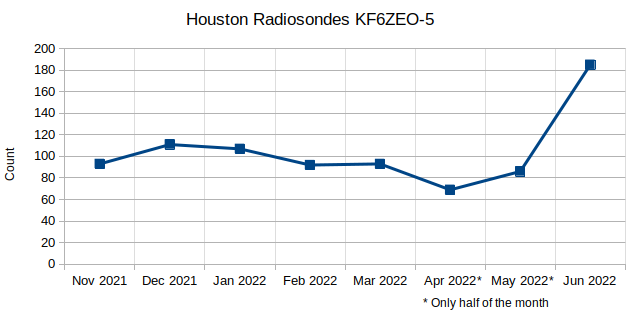
Four launches per day equals about 120 launches per month. My station received around 100 radiosondes per month from November to March, but the hardware failure in April and May reduced the overall count significantly. Given the compromised antenna of this station, receiving this number of radiosondes per month is pretty remarkable.
DFM17 Radiosondes
During the Intensive Operational Period from June to September 2022, the TRACER team is launching DFM17 radiosondes from mobile stations.
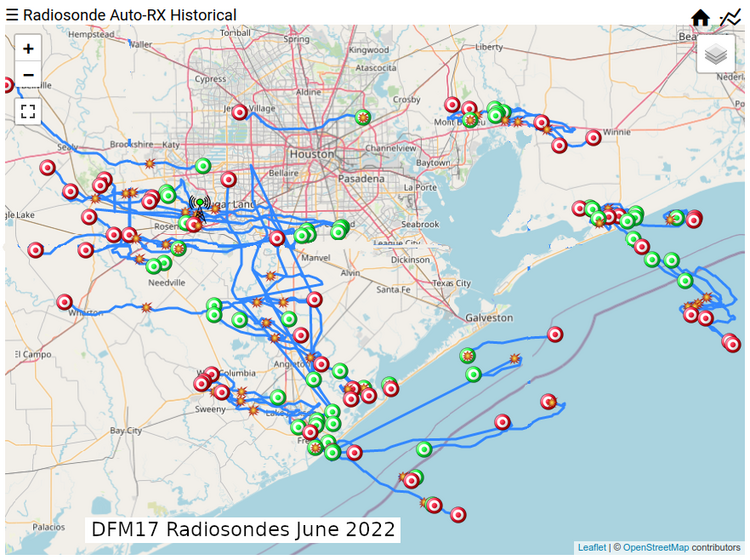
Looking at the map of where I started receiving them, it appears that these radiosondes are launched from four or five distinct sites, including Mont Belvieu, High Island, Freeport/Lake Jackson, Pearland, and Damon.
Future
TRACER is scheduled to run until the end of September 2022, so there are still three more months of RS41 launches from La Porte, and mobile DFM17 launches from around the area. Barring another RTL-SDR hardware failure, I'm hoping to receive as many as possible. Stay tuned!